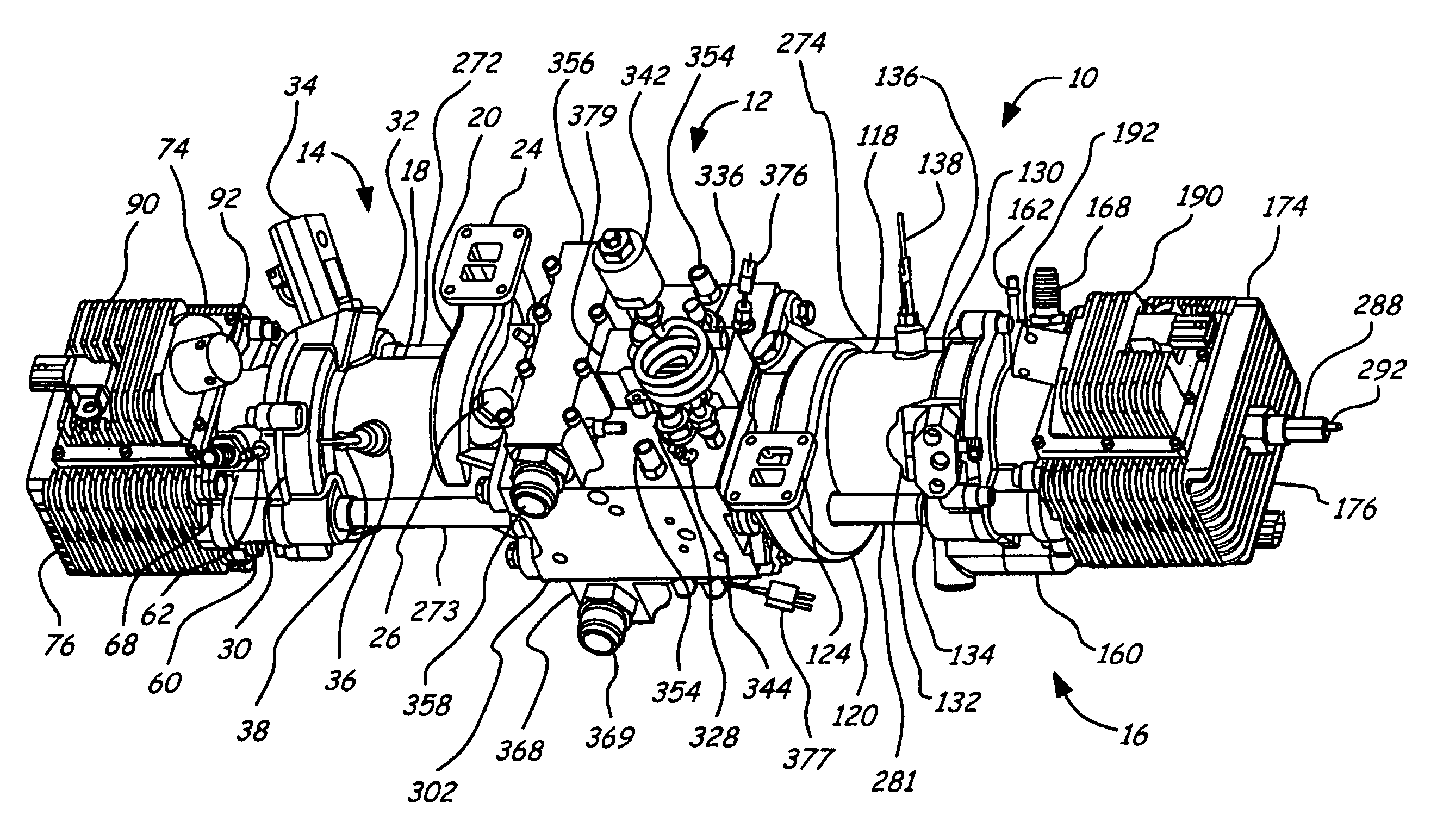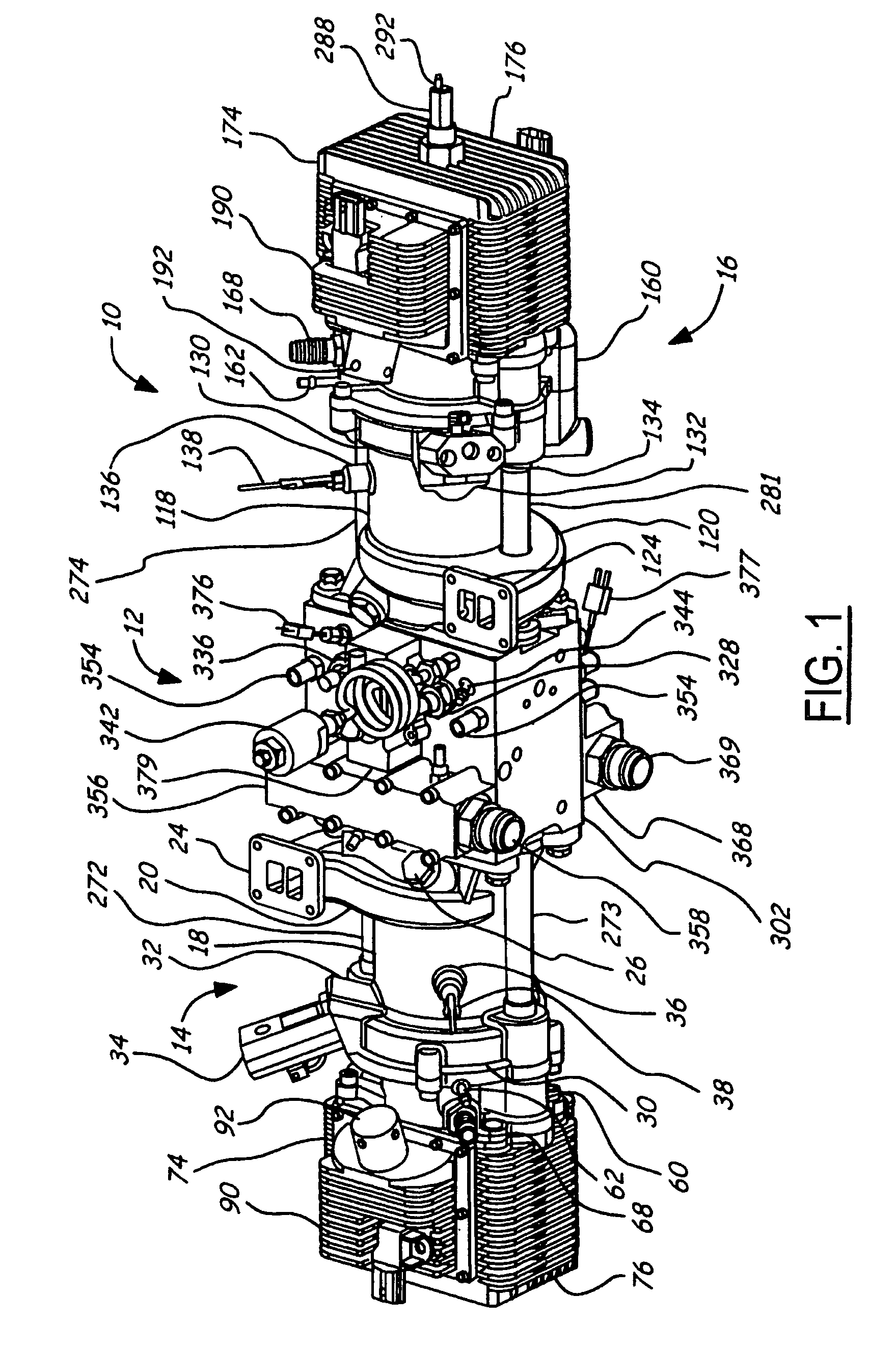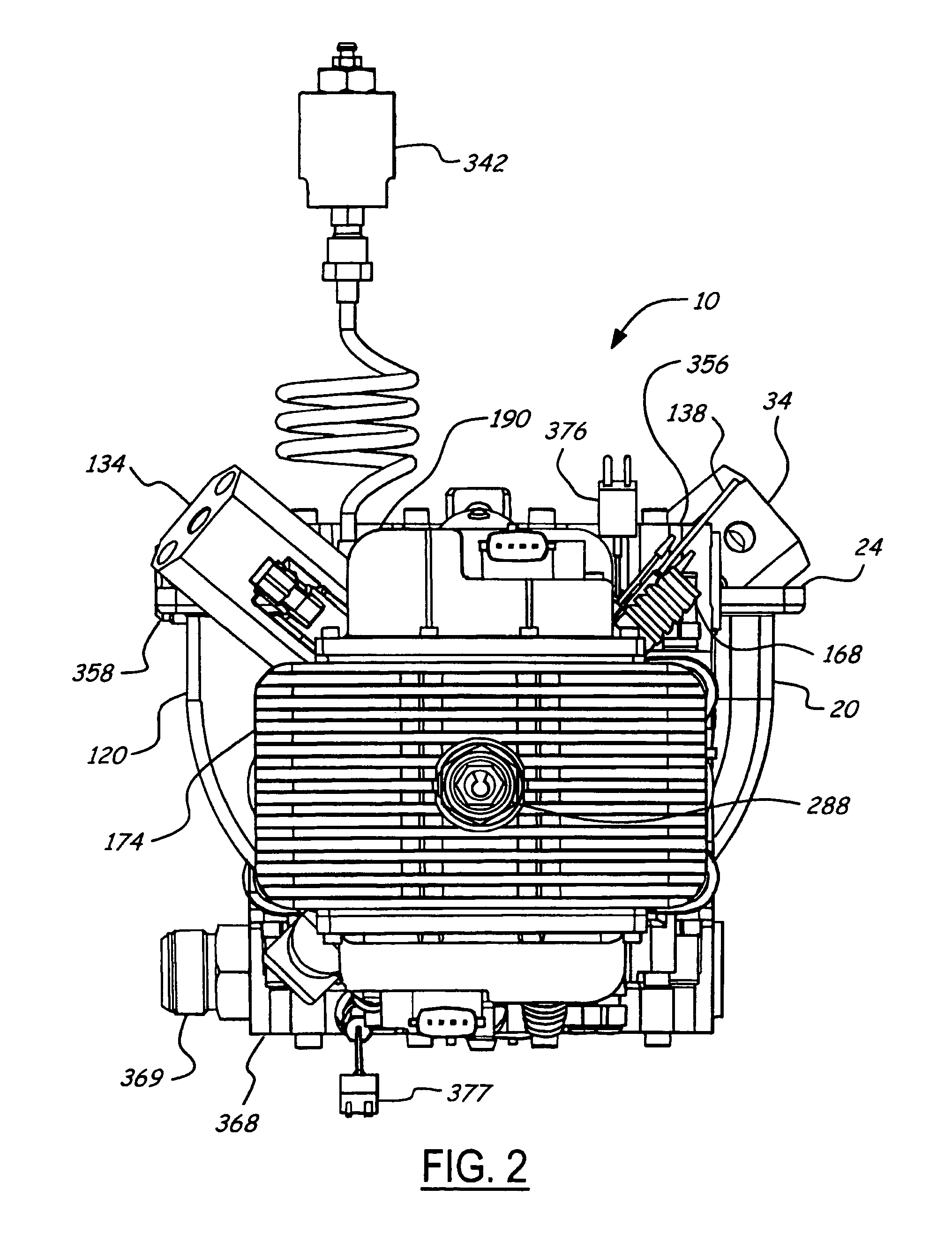Air scavenging for an opposed piston opposed cylinder free piston engine
- Summary
- Abstract
- Description
- Claims
- Application Information
AI Technical Summary
Benefits of technology
Problems solved by technology
Method used
Image
Examples
Embodiment Construction
[0030]FIGS. 1–15 illustrate an opposed piston, opposed cylinder, hydraulic, free piston engine 10. The engine 10 includes a hydraulic pump block assembly 12, with a first piston / cylinder assembly 14 extending therefrom, and a second piston / cylinder assembly 16 extending from the hydraulic pump block assembly 12 in the opposite direction so they are in line. The timing of the first piston / cylinder assembly 14 is opposite to the timing of the second piston / cylinder assembly 16. Thus, when one is at top dead center, the other is at bottom dead center. Moreover, the motion is along or parallel to a single axis of motion. This configuration of free piston engine allows for a more inherently balanced engine.
[0031]The first piston / cylinder assembly 14 includes a first cylinder jacket 18, which mounts to the hydraulic pump block assembly 12. The first cylinder jacket 18 includes a first exhaust gas scroll 20, which is located adjacent to the hydraulic pump block assembly 12. The interior of...
PUM
 Login to View More
Login to View More Abstract
Description
Claims
Application Information
 Login to View More
Login to View More - R&D
- Intellectual Property
- Life Sciences
- Materials
- Tech Scout
- Unparalleled Data Quality
- Higher Quality Content
- 60% Fewer Hallucinations
Browse by: Latest US Patents, China's latest patents, Technical Efficacy Thesaurus, Application Domain, Technology Topic, Popular Technical Reports.
© 2025 PatSnap. All rights reserved.Legal|Privacy policy|Modern Slavery Act Transparency Statement|Sitemap|About US| Contact US: help@patsnap.com



